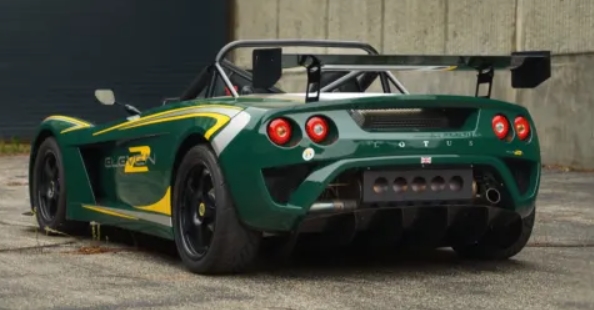The Evolution of the Aston Martin One-77: A Pinnacle of Automotive Engineering
The Aston Martin One-77 stands as one of the most extraordinary and exclusive supercars ever produced by the renowned British automaker. Celebrated for its bespoke craftsmanship, cutting-edge technology, and unparalleled performance, the One-77 embodies Aston Martin’s dedication to blending artistry with engineering excellence. This article traces the evolution of the Aston Martin One-77, detailing its production timeline, models, and trim levels, illustrating its journey from a concept to a limited-production masterpiece.
Origins and Development (2007–2010)
Concept and Design Initiation
The story of the Aston Martin One-77 begins in the mid-2000s when Aston Martin sought to establish a flagship supercar that would showcase its technological prowess and craftsmanship. Announced officially in 2007, the One-77 was conceived as a limited-edition hypercar that would serve as a halo vehicle for the brand. Its name, “One-77,” signifies its exclusivity—just 77 units were planned for production, emphasizing rarity and bespoke luxury.
Design Philosophy and Engineering
The design philosophy centered around a combination of aerodynamic efficiency, striking aesthetics, and lightweight construction. The One-77’s body was meticulously crafted from carbon fiber, a material chosen for its strength-to-weight ratio, allowing for enhanced performance and agility. Its design borrowed cues from classic Aston Martin styling, with a modern interpretation that emphasized sleek lines, a prominent grille, and sculpted aerodynamics.
At the heart of the One-77 was a bespoke 7.3-liter V12 engine, developed specifically for this model, marking a significant milestone in Aston Martin’s engineering history. This naturally aspirated engine was hand-built and delivered remarkable power and responsiveness, aligning with the brand’s philosophy of creating driver-focused machines.
Prototype and Public Reveal
The prototype of the One-77 was completed around 2008, with initial unveiling at the 2009 Geneva Motor Show. The concept drew immediate attention for its radical design and engineering ambitions. The One-77 was slated for production as a highly exclusive model, with each unit hand-assembled at Aston Martin’s facility in Gaydon, England.
Production Phase (2010–2012)
Limited Production and Exclusivity
The Aston Martin One-77 officially entered production in 2010. True to its name and concept, only 77 units were built over a span of two years, making it one of the rarest supercars in existence. Each car was bespoke, with clients able to customize various aspects, including interior materials, paint finishes, and additional performance features.
Models and Trim Levels
Unlike mass-produced automobiles, the One-77 did not have multiple trim levels or variants in the traditional sense. Instead, each unit was a bespoke masterpiece tailored to its owner’s specifications. However, certain key versions and special editions emerged during its production run:
- Standard One-77: The baseline model featured the 7.3-liter V12 engine, producing approximately 750 horsepower and 553 lb-ft of torque. Its performance metrics included a 0-60 mph time of around 3.7 seconds and a top speed exceeding 220 mph, placing it among the fastest cars of its era.
- One-77 Special Editions: Although Aston Martin did not officially designate distinct trim levels, some owners commissioned special features, making certain cars unique. Examples include bespoke paint finishes, personalized interior trim, and performance upgrades.
Technical Specifications
- Engine: 7.3-liter V12 (initially called the “V12 Zagato” engine, but uniquely developed for the One-77)
- Power: ~750 hp
- Torque: 553 lb-ft
- Transmission: 6-speed automated manual (Touchtronic 2)
- Performance: 0-60 mph in approximately 3.7 seconds; top speed over 220 mph
- Chassis: Carbon fiber monocoque
- Weight: Approximately 1,630 kg (3,595 lbs)
Manufacturing and Customization
Each car was handcrafted by Aston Martin’s skilled technicians. Buyers engaged in extensive customization, selecting materials like fine leather, Alcantara, carbon fiber trim, and personalized embroidery. The exclusivity and craftsmanship made the One-77 a symbol of ultimate bespoke luxury.
.
You’ve got that cool car, but is it resting in its own cool place?
It’s visually pleasing for the surrounding areas outside of your home to look as awesome as what’s stored inside your garage! If you desire a truly inspirational environment, you should check into these plans!

.
Post-Production and Legacy (2013 and Beyond)
Discontinuation and Collectibility
The production of the Aston Martin One-77 concluded in 2012, with all 77 units completed. The model’s rarity and bespoke nature have cemented its status as an automotive collector’s item. Due to its limited run and historical significance, the One-77 commands astronomical prices in the collector market, often fetching well above its original price.
Influence on Aston Martin’s Future Models
While the One-77 itself was a one-of-a-kind flagship, its engineering and design philosophies influenced subsequent Aston Martin hypercars. Elements such as lightweight carbon fiber construction, bespoke customization, and naturally aspirated V12 engines persisted in models like the V12 Zagato and the DBS Superleggera.
The One-77’s Significance in Automotive History
The Aston Martin One-77 is regarded as a milestone in automotive history for several reasons:
- Bespoke Craftsmanship: Its fully bespoke approach set new standards for personalization in the supercar world.
- Engineering Excellence: The hand-built 7.3-liter V12 was one of the most powerful naturally aspirated engines of its time.
- Design Innovation: The seamless integration of aerodynamics and aesthetics exemplified modern automotive design.
- Limited Rarity: With only 77 units, the One-77 remains one of the most exclusive supercars ever produced.
Conclusion
The evolution of the Aston Martin One-77 from concept to limited-production masterpiece exemplifies the pinnacle of bespoke automotive engineering. Throughout its production from 2010 to 2012, it maintained its status as an icon of exclusivity, technological innovation, and craftsmanship. While it did not have multiple models or trim levels in the traditional sense, each of its 77 units represented a unique fusion of artistry and engineering. Today, the One-77 remains a symbol of Aston Martin’s dedication to pushing the boundaries of luxury and performance, inspiring future models and captivating automotive enthusiasts worldwide.







